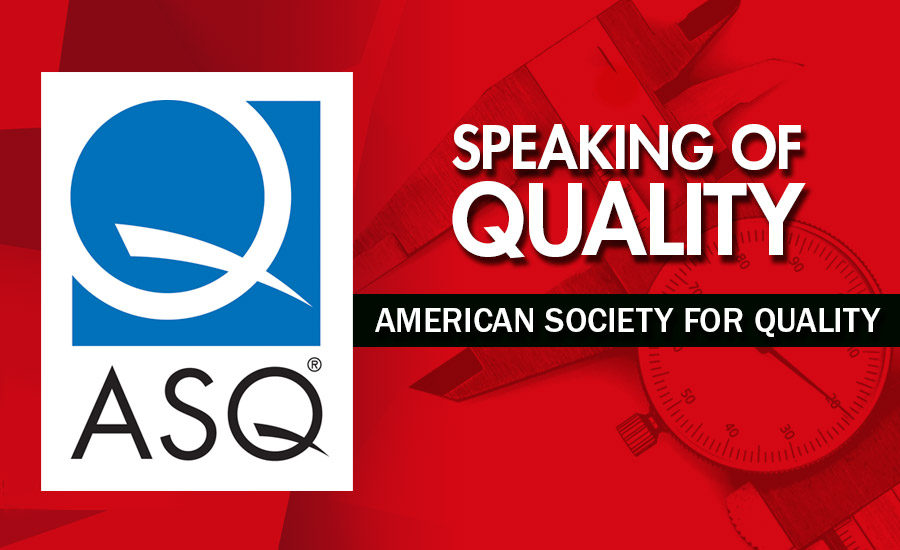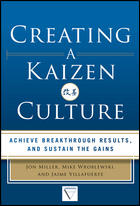Speaking of Quality
Becoming a world-class quality organization
...and continuing to be one

This month the ASQ/APQC Global State of Quality 2 Research will be released. ASQ and APQC have partnered again to examine the Global State of Quality. As the research did in 2013, the Global State of Quality 2 Research once again aims to further advance the world’s understanding of quality’s impact. The goal of this year’s report is to examine trends that have continued to evolve from the 2013 Discoveries report, as well as identify new trends within the quality industry.
Additionally, this research outlines a set of key findings used by organizations from around the world to govern, manage, measure, and support quality.
The Global State of Quality 2 Research report outlines characteristics of organizations or regions that are performing at different levels. At times, the report analysis shows some organizations are performing at a higher level, at times, some of the analysis will focus on challenges that need to be addressed at lower-performing organizations. With this year’s report, one additional step was taken to include an examination of world-class quality organizations. The goal is to provide detailed insight on what those organizations are doing differently.
WHAT IS A WORLD-CLASS QUALITY ORGANIZATION?
To define what a world-class quality organization is, researchers examined the data and found the following characteristics as representative of strong quality practice. World-class quality organizations:
- See quality as strategic and competitive.
- Increase investment in quality departments
- and/or programs.
- Train all employees.
- Train suppliers in quality methodology.
- Offer comprehensive quality training to employees.
- Understand product performance through customers’ eyes.
- Have visible metrics on performance against customer needs.
- Measure the cost of remediation.
- Deliver standard reports across the organization.
- Reap greater than $1M in net savings.
The data set was filtered using these characteristics to identify organizations that had the strongest practice end-to-end. In total, 28 organizations out of 1,665 respondents (1.6%) were designated as world-class quality organizations.
Additionally, there were a number of observations resulting from the analysis of this world-class data set, outlining what differences are found in world-class quality organizations as compared to those not classified as world class.
BUSINESS FOCUS
- 100% have increased investment in quality—almost double the number of organizations not classified as world class
- 96% of world class see quality as strategic and competitive (that is triple the number for other organizations)
- 85% promote challenging quality goals to drive high performance (double the number for other organizations)
TRAINING
- 100% train all employees (more than double the non-world class organizations)
- More than twice as likely to train suppliers (tier 1, tier 2, and tier 3) than non-world class
- Twice as likely to apply knowledge transfer techniques from retiring employees
STANDARDS
- Almost double less likely to have quality-related setbacks
- Almost triple as likely to have reporting standardized across the organization
TECHNOLOGY
- 100% use technology to improve quality awareness and results (50% higher than non-world class)
- 71% use social media to gauge customer sentiment (more than double the non-world class)
- 73% use big data to improve understanding of customers’ needs (more than double the non-world class)
WHERE ARE THE WORLD-CLASS QUALITY ORGANIZATIONS?
While the research shows the majority of world-class quality organizations are in the manufacturing sector and in North America, world-class quality organizations can be found in any industry and anywhere in the world. Based on the Global State of Quality 2 Research, the charts on the previous page show the breakdown based on industry and continent.
HOW TO BECOME A WORLD-CLASS QUALITY ORGANIZATION
There is no magic recipe for becoming a world-class quality organization. Examining the common characteristics and comparing world-class against the non-world-class quality organizations some lessons become clear. Becoming a world-class quality organization does not accidently occur; an organization does not wish itself world-class quality and it becomes so. The rise to becoming a world-class quality organization does not occur in isolation.
While there is no single path to take toward organizational culture and improvement, getting buy-in from top management is key. Once top management is on board, having change management processes in place becomes essential.
And learn, train, repeat. While you might have to find different means of expressing the phrase, “You need to spend money to make money,” these are words to live by. The world-class quality organizations recognized in the Global State of Quality 2 Research did not save millions of dollars by unleashing a team of two into the depths of the company, hoping something good will happen. No, these organizations have clear strategies to meet the goals. The companies invested in their employees to achieve the skill level and common language needed to see big returns on the investment.
Becoming world class doesn’t happen overnight, but being left behind your competition might. Work together for agreed upon, systemic changes and you will see the results.
Looking for a reprint of this article?
From high-res PDFs to custom plaques, order your copy today!




